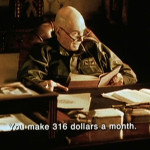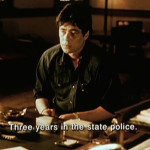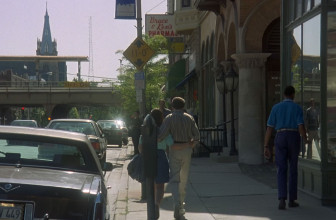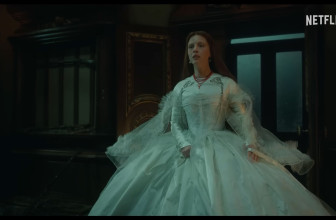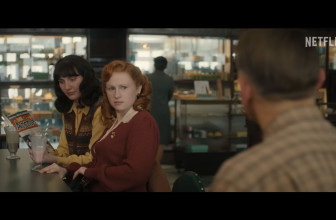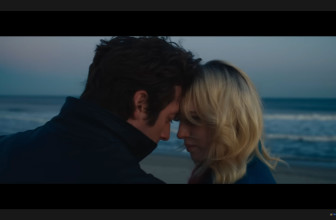When it comes to weaving intricate narratives and pushing cinematic boundaries, Steven Soderbergh is a name that stands tall among modern filmmakers. His ability to dissect complex themes while keeping audiences engaged, along with the way he innovates in cinema has earned him a spot in the annals of cinematic history. Of course, whilst not without its faults, Soderbergh manages to push those cinematic boundaries even in one of his earlier projects, Traffic.
How to Download Traffic
Traffic was released on December 27, 2000. You can download or stream the film from a digital platform. Click on the Download button at the end of this review and make your choice. For a similar theme, check out our reviews of Narcos: Mexico and Breaking Bad.
The Movie Review
Traffic’s story unfurls like an intricate spider’s web, the film captures the lives of disparate characters whose fates are interwoven by the sinister threads of the drug trade. We follow the storylines of a Mexican police officer caught between corruption and conscience, a high-ranking government official waging a war on drugs, and a suburban housewife blindsided by her husband’s criminal involvement. The film’s main focus is how the drug trade had affected people in the 2000s, and yet there was almost nothing they could do.
Traffic Key Facts
| Fact | Information |
|---|---|
| Movie Title | Traffic |
| Release Date | December 27, 2000 |
| Download and Streaming | Available for download/streaming |
| Main Focus | Exploring the impact of the drug trade on people in the 2000s |
| Screenplay and Dialogue | Written by Stephen Gaghan; includes intense and occasionally raw dialogue |
| Stylistic Choices and Narrative Approach | Distinct color palettes used for different storylines; provides a bird’s-eye view of the chaos caused by the drug trade |
| Outstanding Ensemble Cast | Featuring Michael Douglas, Benicio Del Toro, Catherine Zeta-Jones, and Don Cheadle; Del Toro’s performance stands out |
| Cinematography and Visuals | Gritty, documentary-style cinematography; stark contrast between Mexican landscapes and Washington D.C.’s power centers |
| Soundtrack | Haunting score by Cliff Martinez; enhances the emotional impact of crucial moments |
| Verdict | Ambitious narrative structure with some missteps; |
The Screenplay and Dialogue
The screenplay, penned by Stephen Gaghan, juggles multiple plotlines with an intensity to it. The dialogue occasionally dips into exposition, but honestly, it feels quite authentic for the most part. At times, it even becomes raw and painful during the intense exchanges between characters. The film traverses various emotional landscapes, from the gut-wrenching to the suspenseful, and it genuinely left me pondering the far-reaching consequences of personal choices in a world fueled by addiction.
Stylistic Choices and Narrative Approach
His decision to employ distinct color palettes for different storylines helps guide the viewer through the narrative maze, but at times, this stylistic choice can feel overwrought. Soderbergh’s approach to storytelling elevates this narrative juggling act, giving us a bird’s-eye view of the chaos that ensues when society’s fabric is entangled with the horrifying carnage of the narcotics world.
However, such is the world of being an auteur, you make stylistic choices that not everyone will agree with. Thankfully, his knack for building tension, particularly evident in the drug bust sequences, leaves a lasting impression.
Outstanding Ensemble Cast
The main showrunners here are the actors, who take the cake in every sense of the word.
The cast includes heavyweights like Michael Douglas, Benicio Del Toro, Catherine Zeta-Jones, and Don Cheadle. In particular, Del Toro’s Oscar-winning portrayal of a conflicted Mexican cop stands out as a beacon of raw emotion. However, certain characters’ arcs could have benefited from more fleshing out. They were left with a sense of untapped potential, which is something that happens quite often in films with multiple arcs such as this one.
Cinematography and Visuals
Soderbergh decided to adopt a gritty, documentary-style cinematographic approach in the film, which enhances the film’s power in some of the segments. The stark contrast between the sun-drenched Mexican landscapes and the cold, clinical corridors of Washington D.C.’s power centers adds layers to the visual narrative. However, the persistent color grading, while artistically bold, feels a touch heavy-handed in some sequences.
Phenomenal Soundtrack
I must say, though, the soundtrack is absolutely phenomenal. Cliff Martinez’s haunting score casts a shadow over the film, complementing the somber themes and tense atmosphere. The music amplifies a lot of the emotional punch of crucial moments, serving as a steady pulse throughout the story.
It acted almost like a guiding light for me through the labyrinthine plotlines of the film’s diversity and vastness.
Verdict
I won’t say that Traffic is a flawless film, but the good most definitely outweighs the bad in this modern epic. Its ambitious narrative structure might be a double-edged sword, however, Soderbergh’s audacious approach to storytelling, combined with a committed ensemble cast results in an arresting cinematic experience.
The film challenges our perceptions of morality, and despite the missteps, Traffic remains a compelling event to Soderbergh’s prowess in pushing the boundaries of modern filmmaking.

